When I hear a city neighbourhood described as ‘colourful’, I suspect that means it’s going to stimulate other senses, too. Noisy, grimy, smelly, perhaps. The immigrant and working-class area of Lavapies where we stayed in Madrid is cheerful, multicultural, entertaining, but none of the bad things. Our flat was old-fashioned colonial with high ceilings and tall West-facing windows and balconies that looked out onto a square with a little park in the centre. The car park for residents was underneath the park. Here are the sights and sounds from a typical day on the square:
Pre-dawn, the garbage trucks go by, collecting rubbish from the many bars and restaurants round the square. A few people are on their way to the metro or bus stop to get to work. Some have small children with them to drop off at day care. Cars emerge from the underground car park. Neighbourhood dogs and their owners meet up and socialize. Some of the socializing owners forget to scoop the poop. We learn not to walk through the park. The bar across from us opens and commuters scoot in for an espresso at the bar. They invariably light up a cigarette as soon as they walk out. An angry Russian shouts into his mobile as he puffs. Every morning. Every morning the bar owner pushes him on his way and the shouts recede down the street.
It’s light now and the foot traffic picks up. The shops below us squeak their shutters up: the Bangladeshi fruit and veg shop, the betting shop, the convenience store. Close to nine am mothers walk the children to school, colourful headscarves on the women, the kids pulling pink or blue school bags on wheels. The most cheerful and energetic street cleaner in the world starts his shift, swishing his palm leaf branch broom with great vigour and piling the litter into a handcart. Everyone who passes him gets a greeting, and the street will be littered with cigarette butts again within a couple of hours.
Mid-morning, the servers set out tables and chairs on the sidewalk and people stop by for a snack and a coffee or beer, and usually a cigarette too. Delivery trucks arrive at the covered market on the next block, and sleepy bohemian artists wander in to the former tobacco factory on the other side of us, now a warren of art studios. Senior citizens come out to do their shopping, or to take the little electric bus downtown.
Two pm and the bar tables are now full of lunchers. At three o’clock everything goes dead. At four the children get out of school, and at five the shops open again. Workers start the journey home about six or seven, and as the sun sets, the bars fill up with beer drinkers and tapas eaters, a busker singing a Capella in the middle of the square. The dogs and their owners come out again. Moroccan youth light up, jostle each other and text furiously. Students at the community college pour out of class, light up, and text furiously. Thousands of steps, hundreds of cigarettes, megabytes of data. The shops close about 10. The young Bangladeshi woman in the fruit and veg shop who gives us a discount on mangos and oranges likes to practise her English with us. She is moving to London in November to join her father, who works in a restaurant there. I think about London in November; short grey days instead of the light, long evenings here. “Do you have a good winter coat?” I ask her. It won’t be quiet until 1 or 2 in the morning (but our windows are double-glazed, no problem).
Serendipitously, we arrived in Lavapies on the weekend of a tapas festival, and had a lovely time sampling tapas from the international restaurants and bars, and enjoying the free music. Brazilian drummers and a reggae band played right under our balcony. On Sunday, we walked a few blocks to El Rastro and joined the crowds in the enormous weekly flea market. Clothes, leather goods, car parts, electrical appliances and antiques all had their own spots. After wandering the flea market, we stopped for refreshment in a bar with a good view of the crowds. At the table next to us, a little girl’s mouth puckered as she ate the small bowl of olives which came with her parents’ drinks. She ate them all though, and then fed the pips to her toy pony. We noticed the Spaniards got free olives; the tourists did not. Our server did not get a tip.
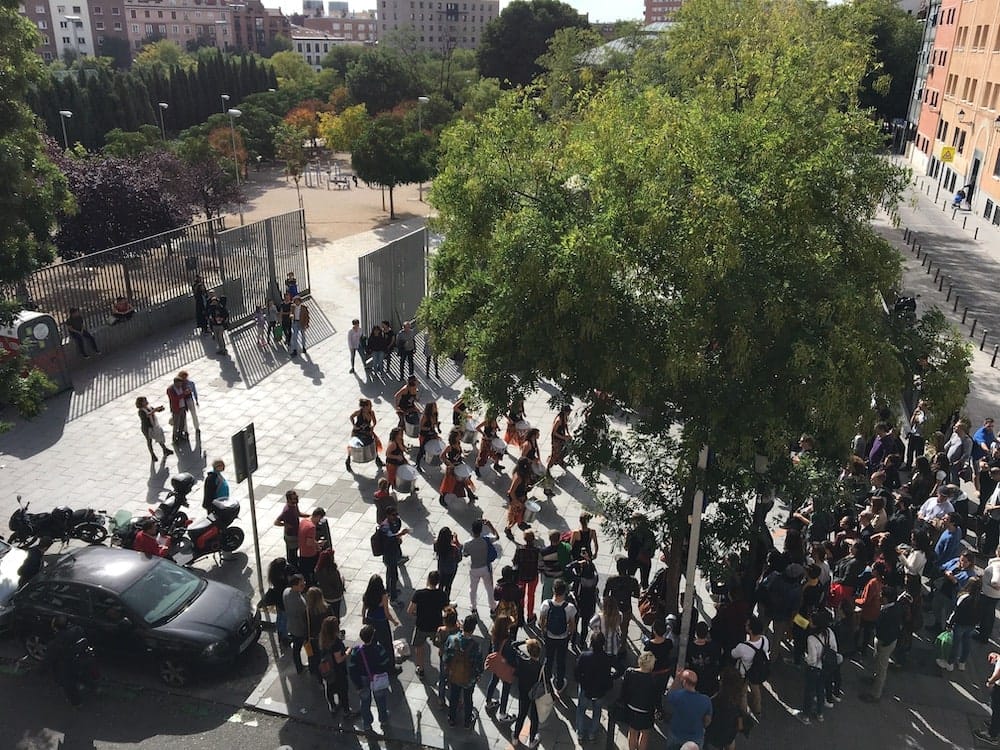
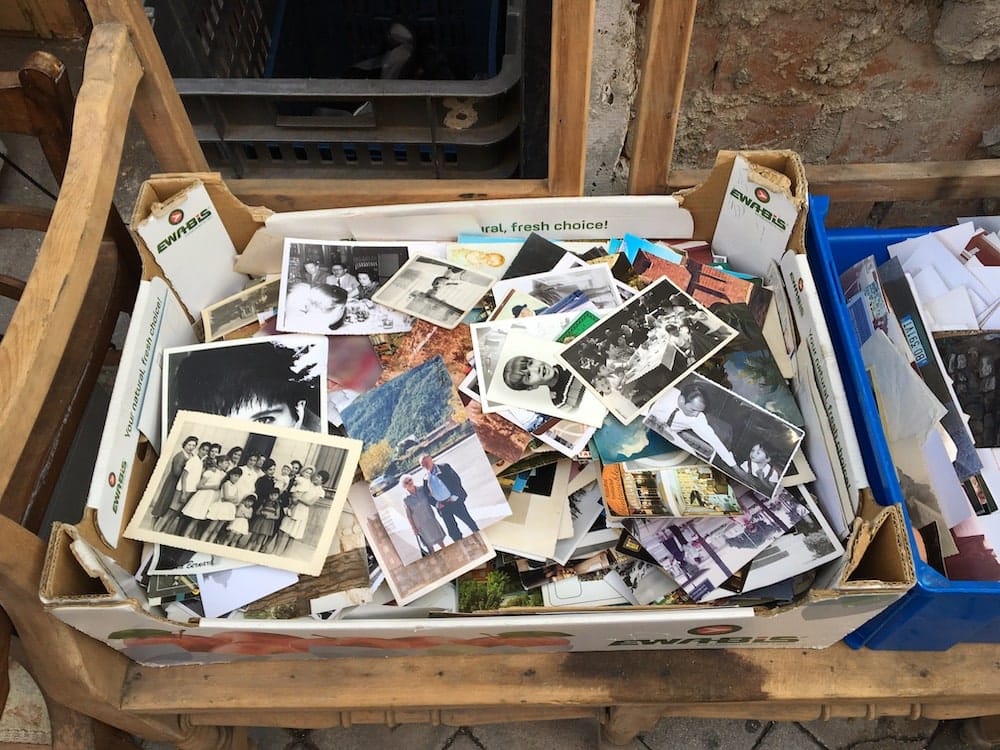
Madrid is a capital city, but the centre is unexpectedly quiet. Traffic is now extremely restricted, and most of it goes under the streets. The motorway which used to stream both sides of the river is also re-routed underground, and the river banks were converted into miles of walking, running and cycling paths, gardens and fountains. I thought Madrid would be full of imposing imperial-style buildings, and there are quite a lot. But some of the tourist bits feel quite neighbourly, like the Plaza Mayor, where the residents of studio apartments looking out onto the plaza don’t mind hanging their underwear out on the balconies to dry. Down in the plaza, African refugees lay out fake brand handbags and sneakers on white tarpaulins. They attach strings to each corner and stand holding the strings, one eye on the Look Out. If the police are coming, they get a signal, and like a flock of white birds taking off, they gather up their bundles with the flick of a wrist, hoist them over their shoulders and boot it around the corner. And like disturbed birds, they flutter back as soon as the patrol car has left, laying out their goods again with great patience.

What better way to observe Madrilenos than to go to a La Liga soccer match? If it satisfies a life-long dream of MLH’s so much the better. Off we went by bus on Saturday to the Bernabeu Stadium to watch Real Madrid play Levante. I had never been to a soccer match which had neither of my children playing in it, and the Bernabeu Stadium holds 75,000 spectators; I was prepared to be wowed. We got there early to soak in the atmosphere and have a beer at one of the bars nearby where deep conversations about players and strategy were going on. Next to us way up in the gods a mother, father and six-or-seven-year-old boy settled in, but most of the fans were adult males and die-hard fans. The little boy was self-consciously sporting his commemorative scarf, which he fingered lovingly every few minutes. He was soon to get some lessons in disappointment, because Real Madrid played abysmally and lost 3-1. The boy mirrored the despair of his father, which meant he pulled his hair, buried his face in his hands, flung his arms about, and occasionally shouted ‘Stupido!’ at a player who had lost the ball. The die-hard fans did much worse, but they did not have young sons with them. Subdued Real Madrid fans left the stadium, but it was a thrilling experience to be right there, and we did see 4 skilled goals.
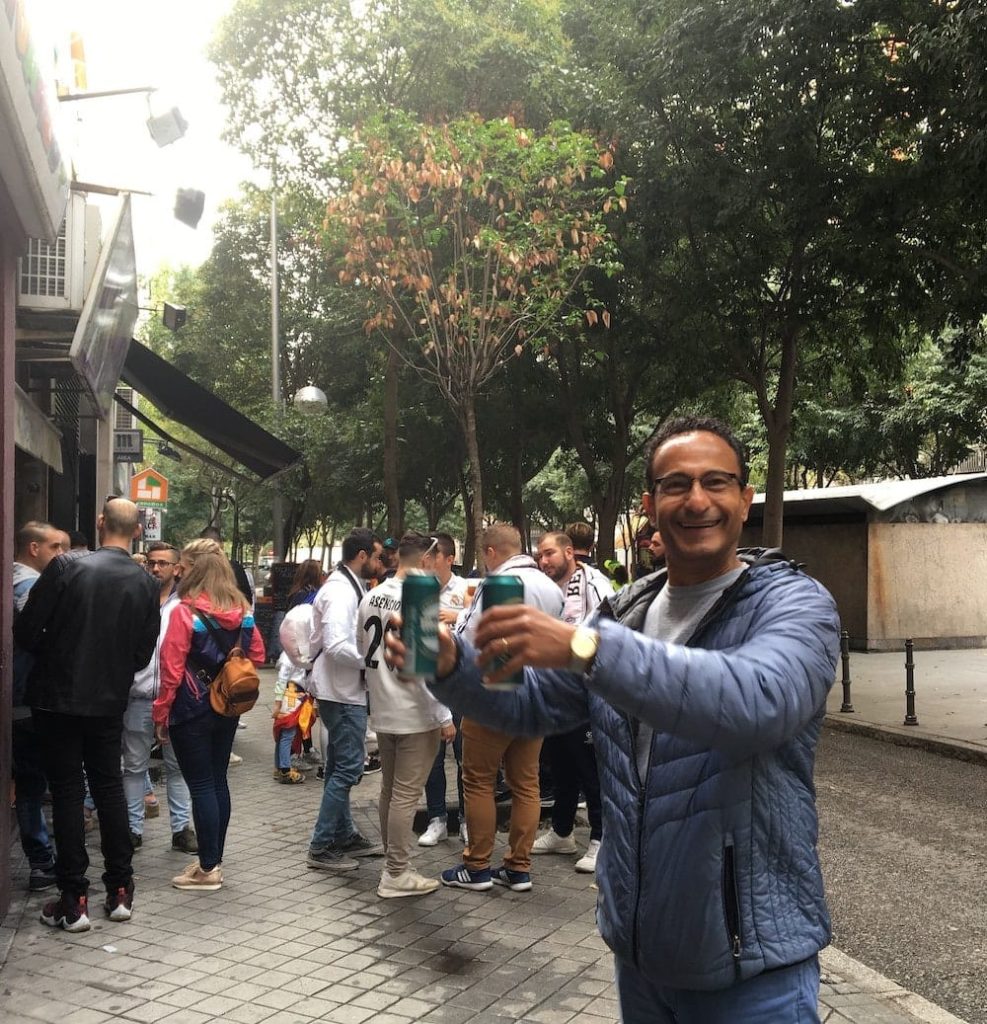
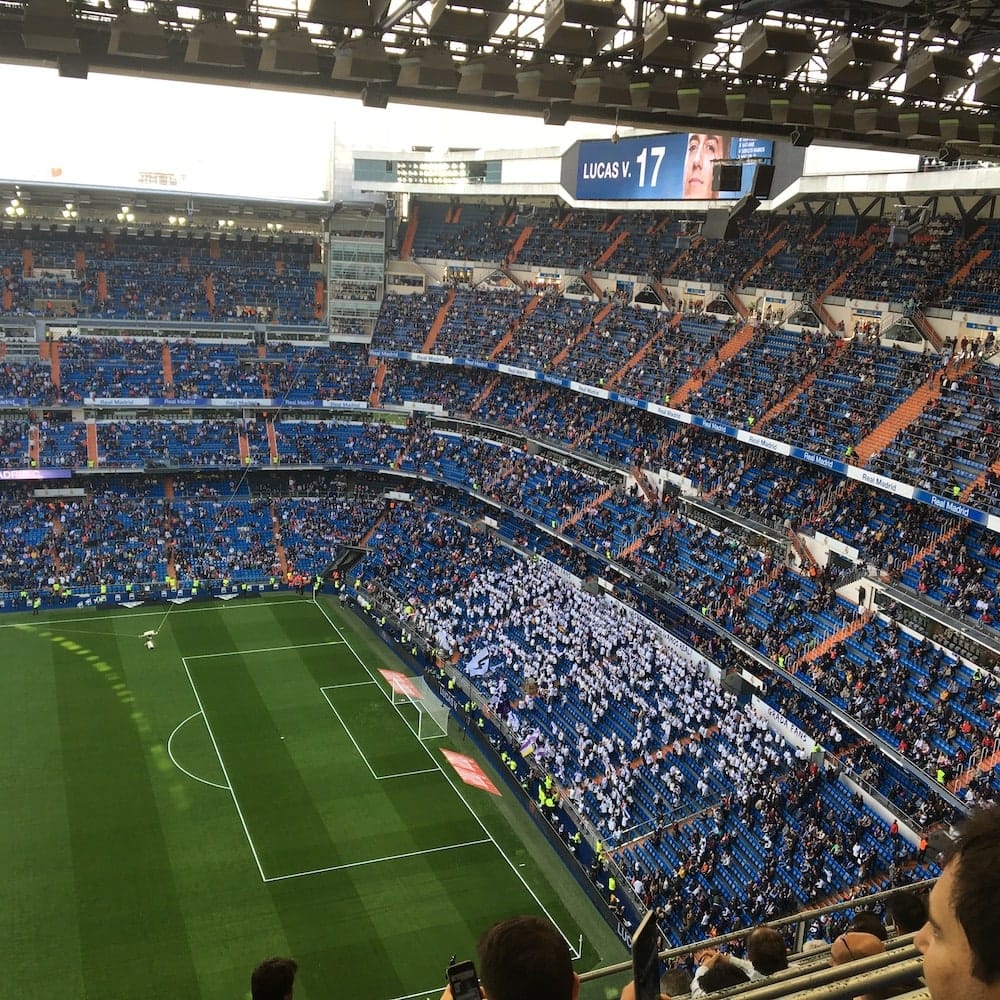
The worst thing the fans did was smoke in the stadium where we couldn’t escape it. This is why Madrid should come with a health warning. One of the attractions of Southern Europe is the social habit of sitting outside at a café or bar to eat or drink. Unlike other European countries where they have completely banned smoking in public places, Spain allows it at outside tables. It’s infuriating. You spot an empty table on the sunny side of a piazza, settle yourself and order a coffee or beer, and someone at the next table lights up and smokes you out. You are consulting the guide book for the next stop, when your lungs get filled with evil cigar smoke, being wafted about because cigar smokers tend to pace (why?) I thought naively that when it got colder the smokers would disappear. Not at all. They haul out exterior heaters so that the rising smoke hovers even longer around your head. Have Spaniards not heard of the dangers of second-hand smoke? While in Canada recreational marijuana was being legalized and Halifax was restricting any smoking on city property, I saw mothers holding a cigarette away from the pram as they leant over their babies and parents exhaling over the heads of their children at the dinner table. Insider tip: the only place we didn’t have this problem was at the famous hot chocolate and churros café, Chocolateria San Gines. You will again about ten pounds in an afternoon, but your lungs will be clear.
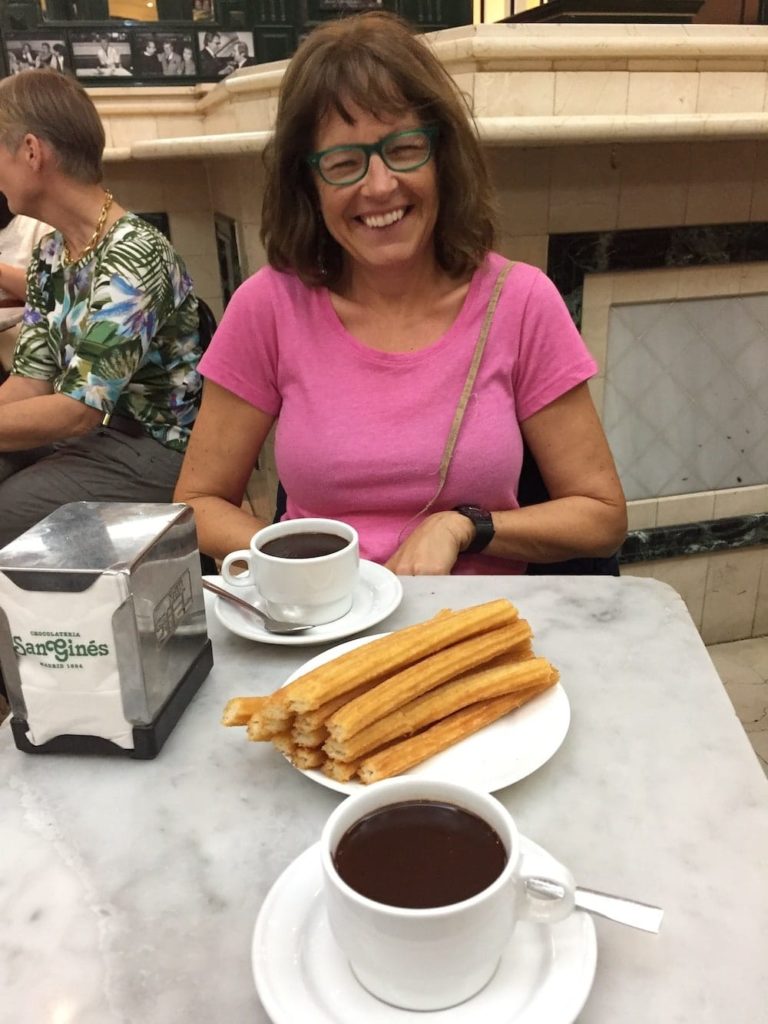
By now you are thinking what about all the famous palaces, museums and art galleries? We ‘did’ our fair share, including a visiting exhibition on the Egyptian Pharaohs from the British Museum, and an almost empty Museum of the Americas. We had left the Prado Museum, possibly the best art collection in the world, until last. But I went alone. The only good thing General Franco did for Spain during his 40-year dictatorship was to insist that ordinary Spaniards should be able to afford a decent lunch. Most bars and restaurants still offer a ‘Menu of the Day’ Monday to Friday for a reasonable price: 3 courses, bread and a drink. On Prado day, we stopped for lunch at the sort of establishment where regular customers have their own bottle of wine behind the bar, and their grandparents were born a few houses away. This ‘Menu de Dia’ was generous and included a whole bottle of red wine between the two of us, and MLH balked when it was time to go to the Prado. So I was alone as I floated rather than walked around the awe-inspiring collection, wobbling past the Velazquez and Goya canvases, trying not to hiccup as I stared down the 16th century noblemen and ladies in front of their portraits. And what did MLH do that afternoon? He had his hair cut by a Moroccan barber, interrogated him about Spain in Arabic, and was all-in-all very pleased with himself by the time I got home.
He didn’t know that we weren’t nearly finished with Spanish history and art. Our next stop was chock-a-block with both.